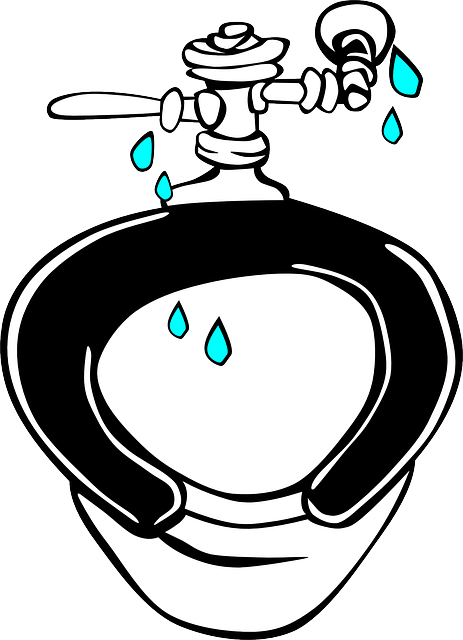Low water pressure can be caused by plumbing leaks, outdated fixtures, or sediment buildup in your home's water lines. A faulty pressure regulator or the need for a booster pump (especially in older homes) might also contribute. Regular maintenance like filter replacement and leak checks are essential. Installing faucet aerators can increase flow rate without reducing pressure. Addressing sediment issues and regularly checking plumbing systems ensures optimal water pressure, enhances efficiency, and preserves your plumbing system's lifespan.
Are you tired of dealing with weak, trickling water at your faucets? Low water pressure can be a frustrating issue, but understanding its causes is the first step to fixing it. This article guides you through several effective solutions, from addressing sediment buildup and installing pressure regulators to exploring options like faucet aerators and booster pumps. By the end, you’ll have the knowledge to restore robust water pressure in your home, eliminating plumbing leaks and improving overall efficiency.
- Understanding Low Water Pressure and Its Causes
- The Role of a Pressure Regulator in Your Plumbing System
- How Faucet Aerators Can Help Improve Water Flow
- Addressing Sediment Buildup: When and How to Clean or Replace Filters
- Considering a Booster Pump for Optimal Water Pressure
Understanding Low Water Pressure and Its Causes

Low water pressure is a common household issue that can significantly impact your daily routines. It’s important to understand the potential causes behind this problem, especially as it relates to your plumbing system. One of the primary culprits is plumbing leaks, which can occur in various parts of your pipes, including fittings, valves, or even the water supply lines themselves. Over time, these leaks can lead to a significant reduction in water pressure throughout your home.
Another factor to consider is the role of a pressure regulator. This component is designed to maintain consistent water pressure at the outlets, ensuring an optimal flow rate. However, if it’s faulty or improperly adjusted, it might not be able to regulate the pressure effectively. Additionally, sediment buildup in water lines or within faucet aerators can restrict water flow, resulting in low pressure. In some cases, a booster pump might be required to increase pressure, especially in older homes with outdated plumbing systems.
The Role of a Pressure Regulator in Your Plumbing System

A pressure regulator plays a crucial role in maintaining optimal water pressure throughout your plumbing system. This device is designed to keep water flowing at a consistent and safe rate, preventing sudden spikes or drops that can lead to low water pressure. By regulating the water pressure, it helps to ensure that your faucets, showers, and appliances receive the right amount of force, enhancing efficiency and performance.
Over time, factors like sediment buildup, plumbing leaks, or even faucet aerators can impact the regulator’s effectiveness. For instance, sediment buildup in pipes can restrict water flow, leading to reduced pressure. In such cases, regular maintenance is essential. Replacing or cleaning your water filters and checking for any leaks in the system can significantly improve water pressure. Additionally, installing a booster pump may be necessary if the low water pressure persists, especially in older homes where the pressure regulator might be outdated or less efficient.
How Faucet Aerators Can Help Improve Water Flow

Low water pressure can be a common issue in many homes, often caused by various factors like plumbing leaks, outdated fixtures, or even sediment buildup in your pipes. One simple yet effective solution to consider is installing faucet aerators. These devices are designed to mix air with the water flowing through them, resulting in an improved flow rate without compromising water pressure. By enhancing the water’s velocity, faucet aerators can mask the effects of reduced pressure caused by issues like a faulty pressure regulator or an underpowered booster pump.
Faucet aerators also offer additional benefits beyond improving water flow. They can help extend the life of your existing plumbing system by reducing the risk of blockages and sediment buildup in pipes, which is often linked to low water pressure. With their ability to provide a steady and powerful water stream, these aerators are an easy and cost-effective way to transform your everyday shower or sink experience, ensuring you get the best possible performance without excessive splashing or wasting water.
Addressing Sediment Buildup: When and How to Clean or Replace Filters

Over time, water filters can become clogged with sediment buildup, which not only reduces water flow but also affects the quality of your tap water. This is especially true in areas prone to high mineral content or where plumbing leaks are common. One of the first signs that your filter needs attention is a noticeable decrease in water pressure from faucets and appliances, like your showerhead or Dishwasher.
Regular cleaning or replacement of filters is crucial to maintaining optimal water pressure and flow. For minor sediment buildup, consider removing and rinsing the filter under running water. If it’s severely clogged, you might need to replace it entirely. Upgrading to a high-quality filter with a built-in booster pump can also help mitigate sediment issues and plumbing leaks, ensuring that your home receives clean water without compromising pressure. Additionally, installing faucet aerators can reduce mineral buildup and improve low water pressure caused by sediment accumulation.
Considering a Booster Pump for Optimal Water Pressure

Low water pressure can be a common issue in many homes, often caused by factors like plumbing leaks or a faulty pressure regulator. One effective solution to consider is installing a booster pump, especially if your home has older pipes or multiple fixtures demanding high-pressure water. These pumps are designed to increase water pressure throughout your plumbing system, ensuring that your faucets, showers, and appliances receive the optimal flow rate.
By addressing sediment buildup in pipes, which can restrict water flow, a booster pump can help maintain consistent pressure. Additionally, combining a booster pump with faucet aerators can further enhance water pressure at individual fixtures while reducing wastage, as these devices mix air with water to preserve flow without compromising pressure.
